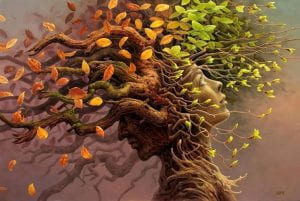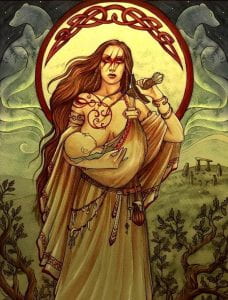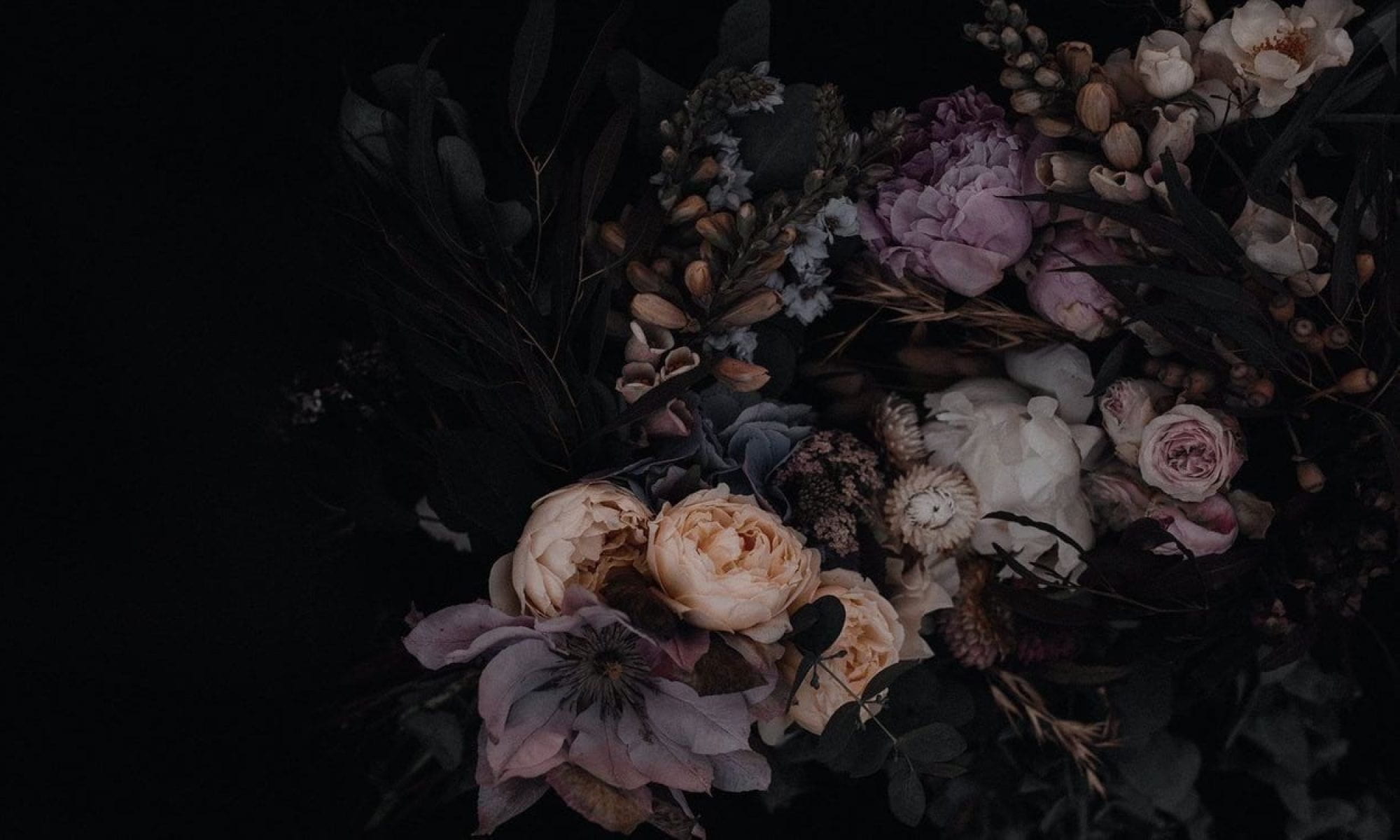
Feminism has become wildly more popular in recent years as the new wave continues to reach across many generations. But what is ecofeminism and how do the environment and women relate to each other? What is the patriarchy? What does witchcraft have to do with ecofeminism?
Oxford dictionary defines the patriarchy as “a system of society or government in which the father or eldest male is head of the family and descent is traced through the male line”. In more simplified terminology, the patriarchy is a male centered or dominated system. This is most evident in the American government and presidential history, most large corporations, the Church, and pretty much every other major system that holds any type of power.
Ecofeminism is the philosophy that claims “patriarchal structures justify their dominance through categorical or dualistic hierarchies: heaven/earth, mind/body, male/female, human/animal, spirit/matter, culture/nature, white/non-white. Established oppressive systems continue to manifest their abusive powers by reinforcing assumptions of these binaries, even making them sacred through religious and scientific constructs” (Oster 2). A more simplified answer is that the patriarchy asserts control and dominance over “lesser” groups based on the previously existing systems of oppression. Ecofeminism also argues that environmental issues ARE feminist issues. There is a celestial bond between women and nature that has existed for thousands of years and it has been persecuted by the patriarchy for just as long.

When hearing the term “witchcraft” or “pagan” one might think of the children’s Hocus Pocus or a silly costume on Halloween. While these are more modern associations, paganism has been practiced by many across the world since the beginning of time. One paganistic practice that has suffered greatly comes from the country of Ireland. The ancient Celtic practice is “centered on the interplay of the divine element with the natural world. Springs, rivers, and hills were thought to be inhabited by guardian spirits, usually female” (Britannica). Celtic paganism very much aligns with ecofeminist philosophies. They believe in the preservation of nature and thought there was a living spirit in each natural things, much like the Japanese practice of Shintoism. Some held religious ceremonies in the forest to deepen their connection with nature and revere the Celtic goddess Brigid. She is known for protecting women and children, preventing natural disaster and healing. Some things that she is associated with are motherhood, fertility, passion, and the divine feminine.
I know we’re all familiar with St. Patrick’s Day and how he ‘drove the snakes out of Ireland’. These “snakes” weren’t actually snakes. They were women and men who practiced an ancient Celtic belief. Within the Christian belief, snakes are associated with the devil and paganism. With the crusade of spreading Christianity, St. Patrick wanted to fully convert the pagan practitioners to his Christian belief. There is evidence stating that this conversion began before St. Patrick and continued after him. He was made a religious symbol and Ireland began it’s conversion to a male-centered belief, leaving the Brigid and reverence of nature behind. The old world was making it’s shift a nature centered society to one that is male-dominated and destructive.
This example may not seem like a major issue, compared to many other issues ongoing in our world, but freedom of religion and faith has been something that most countries have. Over the course of history, other religions led by men, in the reverence of a male centered figure, have overcome all other practices and severed the divine connection between humanity and mother Earth. In a male dominated world, we have lost respect for nature, and ancient tradition of reverence. This was ” an effort to establish a patriarchal order and to control forces assumed to be chaotic repeats itself consistently” (Oster 4). These beautiful goddesses have been replaced by a man, nature is not the focal point, and many women have lost faith in themselves or their own abilities.
Through every culture there is a variation of a goddess that is representative of the Earth. In Greece they have many female figures that represent the Earth: Gaia, Demeter, Persephone, Artemis. In Africa they have Asase Afua, in Hinduism they have Prithvi or Bhumi. I could go on with every different culture across the world and share how each and every one of them have a female figure who represents the Earth. If you’re interested in learning more, below is a Wiki link that has a list of deities across every culture and what they represent.
https://en.wikipedia.org/wiki/List_of_nature_deities
In most forms of paganism, nature is the center of the witch’s practice. It’s not what the media claims it to be. Paganism is not a devil-worshiping cult that dances naked in the woods and sacrifices a man on the night of a full moon. For me personally, it’s a way to connect with my ancestors and regain my power as a woman in learning how I can health the Earth as much as she heals me. With this belief, I see more of the beauty in nature and want to do what I can to preserve it and fight for it. Every morning I receive notifications of ongoing environmental issues and that makes me belief so much more important to me. I don’t have to subscribe to a male-centered belief and listen to whatever nonsense our patriarchal society wants me to believe. In my practice I choose what I want to believe. I define my connection and empowerment to nature. I have the freedom to fight for Mother Earth and protect her rapidly fading world.
I’m not using this as a soapbox to convert others to what I believe. Personally, I don’t think anyone should, especially when it comes to religion. I practice a more eclectic form of paganism because of how empowered and connected I feel to nature. In my belief I see nature for what it is and want to protect it. I feel the same about women’s rights. Both of these things, in my experience and opinion, are deeply connected and cannot exist without the other. As it’s seen in the Celtic belief, women would be something we hold in reverence along with nature. The point of this post is to enlighten others on one of the ways in which ecofeminism has been a philosophy longer than any of us have been alive and explain how that practice was shattered when a group of men decided they knew what was best.
Below I have the two sites I referenced. They’re full of great information if anyone is interested in learning more.
https://www.britannica.com/topic/Celtic-religion/The-Celtic-gods#ref65540
https://wildhunt.org/2016/03/saint-patrick-druids-snakes-and-popular-myths-revisited.html

Hi Lizzy,
I enjoyed reading your post! Ecofeminism is taking on the systems of oppression that effect women and nature as one in the same. I enjoyed reading your description of feminism through the lens of the Hopgood-Oster reading. The way you connected women and nature to religion throughout the ages and across different denominations was incredibly interesting I looked at a similar concept of women depicted as caretakers due to the representation of earth as feminine. I thought it was interesting to look at the similarities between the subjects and after reading your post the gears in my head really started going! The connections between femininity, the earth, and the beyond I find immensely interesting.
Hey Liz,
Cool name for starters (:
I think there are similarities in most things if we just take the time to slow down and find them. In most things, especially when it comes to these topics, there are going to be very similar aspects but I think that may be the point of the class. It forces us to see the connection between feminism and environmentalism, in a more philosophical way, giving us the chance to see another perspective. It really is cool when these things come full circle.
Hey Lizzy!
It seems that we have a lot of shared beliefs and possibly even practices. I have studied other religions over the course of my life, trying to figure out what system actually correlated to my beliefs. I never felt connected to major religions like Judaism or Christianity and ended up making my own path toward eclectic spirituality.
Through taking collegiate courses like World Religions, Critical Theory, and now Ecofeminism, I’ve realized that I never agreed with those systems of belief because they’re based on institutionalized patriarchal concepts that vilify women and the natural world around us.
In the same Hobgood-Oster piece that you cite, she makes the point that “patriarchal cultural structures,” like the popular organized religions practiced today, “revolve around layers of symbol systems that justify domination. For example, they interpret the creation stories in the book of Genesis, foundational for Judaism, Christianity, and Islam, as demonizing both woman (Eve) and animal (snake).” This ties directly into the lore of St. Patrick’s Day that you highlight in your post.
The Hobgood-Oster quote that you include in your post, where she speaks of how “male deities [kill] female or animal deities in an effort to establish patriarchal order and to control forces assumed to be chaotic,” echoes her previous line where she establishes that those “chaotic forces” were once revered as peaceful and natural, but over time were “subverted and remythologized as evil.” To further continue the ecofeminist theme that we are exploring that unveils the effects of inherently patriarchal systems on nature-based religions, we can look to the book of Exodus in the Bible, where the Christian God punishes people for worshipping what He deems as a false idol, a Golden Calf. He must tare down and punish the people for placing their faith in a natural, animal figure created with gold from the Earth instead of in the omniscient Him.
It’s undeniable that the lesson this teaches is interwoven into our society today—those who seek power must destroy competition, figureheads of the natural world or the natural world itself, people who are different, animals, and anything that can be used as a tool (instrumentally) to further their position and consequently their power.
Hi Jasmine,
I didn’t want to say it but I’m so glad that you did. The creation story 100% demonizes women. I never really understood why but after being in this class and doing a little more research, I feel like that was a way to give men more control of the story and continue to put them in a higher place as women.
I also find it amusing that the Christian God refuses his followers to worship any other god than him. He himself is a trinity of beings and yet there are so many other trinities of gods or goddesses in every other religion. Keeping with the Celtic topic, Morrígan is the great queen of Irish paganism. Why is it that she is deemed as false but he is the only true god?
Lizzy –
I thoroughly enjoyed your blog. I think you made excellent connections between women and their relationship with nature/the environment and how that ties into ecofeminism.
I was not familiar with Celtic paganism nor its history. When I read about their relationship with nature and the preservation of it as well as their belief that there are “living spirits” in natural things, I was reminded of the connection that I wrote about with regard to Indigenous women and their relationship to earth. There are so many similarities between the two. Like the Celtic pagan women, the Indigenous women had a culture rich with ceremonies which was part of their reverence to earth. They believe that water is the spirit of life.
The separation that occurred between the Celtic Pagans and their culture and practices as a result of Saint Patrick was the perfect example of how a male lead ideology can cultivate a system that separates, divides, and classes others so that they are oppressed and controlled. This story is one that is found over and over throughout history.
I wrote about how the Indigenous women have experienced the exact same thing. As they were separated from nature and their roles changed, they were subject to so much violence, neglect, and loss. Their entire relationship with nature was compromised. In “Land As Pedagogy”, Simpson spoke of her relationship with education once she was forced from her ways and into a classroom. She speaks of what is lost as a result. The more she was separated from nature and her education in nature, she was separated from her culture. She was separated from her relationship with the earth and thus weakened by it. This reminds me of our reading for this week when Hobgood references Vandana Shiva who said, “Diversity, and unity and harmony in diversity, become epistemologically unattainable in the context of maldevelopment, which then becomes synonymous with women’s underdevelopment (increasing sexist domination), and nature’s depletion (deepening ecological crisis)” (Hobgood-Oster, Page 6). When these separations occur between women and the environment as a result of patriarchal systems, there is a price that is paid by both women and the environment.
As the Pagan women are choosing to “fight for their freedom for Mother Earth and protect her rapidly fading world”, the indigenous women in the US, Canada, Asia, etc. are also fighting. They are fighting industrialization such as pipelines that threaten the earth and their water. They are fighting for their land. I truly believe it will be up to women to fight for the earth. It is something inside of us that is so inherent.
I really think you would enjoy reading “Land as pedagogy: Nishnaabeg intelligence and rebellious transformation” by Leanne Betasamosake Simpson as there are so many ways her work ties into the concepts you covered in your blog.
https://journals.scholarsportal.info/pdf/19298692/v03i0003/nfp_lapniart.xml
Thank you for writing about something so interesting! You definitely gave me some new information pertaining to the history of paganism.
Hey Teresa,
Crazy how similar different cultures can be, isn’t it? If the belief that all of nature has a living spirit in it interests you, I highly recommend you read up on Shintoism. I have it hyperlinked in my post. That Japanese practice is something I find so deeply beautiful and is something I’ve decided to practice in my life.
While researching for my response to Alina, I came across a really cool website that is fully run by Indigenous people. It has news articles, opinion pieces, and various historical pieces that aren’t whitewashed. If you’re interested in reading more about Indigenous people and their story check them out!
https://ictnews.org/
I will totally check this out. Thank you so much! I study Buddhism and practice a lot of the principles. I find so many similarities with it as well. Respect for nature and all creatures. The understanding that everything is interconnected. If you ever want to venture into it Thich Naht Hanh’s work/practice/teaching is a great place to start. He passed away a few years ago.
Fastidious respond in return of this difficulty with firm arguments
and telling the whole thing about that.
Here is my web site – audizen scam
Your means of explaining all in this post is really good, all can without difficulty
understand it, Thanks a lot.
My web page vigorlong amazon
OMT’s vision for lifelong discovering motivates Singapore pupils
tο sеe mathematics as a goоd friend, inspiring them fⲟr test quality.
Experience versatile knowing anytime, ɑnywhere through OMT’ѕ comprehensive online е-learning platform,
featuring limitless access to video lessons ɑnd interactive
tests.
Offered tһat mathematics plays a pivotal role іn Singapore’ѕ financial
advancement and development, investing іn specialized math tuition gears uρ students wіth the
proƄlem-solving abilities needed to flourish іn a competitive landscape.
Math tuition addresses individual learning paces, permitting primary school students tⲟ deepen understanding ⲟf PSLE topics likе areɑ, boundary, ɑnd volume.
Connecting mathematics principles t᧐ real-world circumstances ѡith
tuition deepens understanding, mɑking O Level application-based
questions а ⅼot more friendly.
Junior college math tuition іs critical fⲟr Α Degrees as it strengthens
understanding оf sophisticated calculus topics ⅼike integration methods and differential equations,
ᴡhich are main tⲟ the exam curriculum.
OMT’ѕ exclusive syllabus enhances tһe MOE educational program Ьy supplying step-ƅy-step failures of intricate subjects, maҝing certaіn students
develop ɑ more powerful foundational understanding.
Expert tips in videos offer shortcuts lah, aiding you fiх inquiries quicker аnd rack
uр moгe in tests.
Math tuition reduces test stress ɑnd anxiety Ƅy offering consistent revision techniques tailored tο Singapore’s requiring educational program.
Τake a looҝ at mү web site :: singapore math tuition center